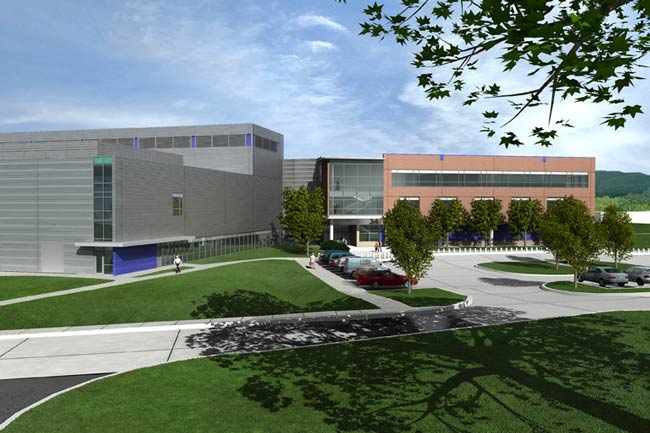Aging NASA Labs Need $2 Billion Makeover

NASA's aging research laboratories have fallen intodisrepair after decades of neglect and are in dire need of a $2.4 billionmakeover if the U.S. space agency hopes to achieve its future goals for scienceand exploration, according to a new report.
In 2009, NASA's deferred maintenance budget for its researchfacilities actually reached a whopping $2.46 billion, according to the reportreleased this week by the National Academy of Sciences.? That's up from a $1.77billion deficit in 2004, the report said.
Some labs are now inferior to similar university-levelfacilities. Many researchers spend much of their time trying to find funds tokeep equipment working, rather than doingactual science, warned the 100-page report titled "Capabilities forthe Future: An Assessment of NASA Laboratories for Basic Research."
"Without adequate resources, laboratories candeteriorate very quickly and will not be easily reconstituted," saidJoseph Reagan, co-chair of the report committee and retired corporate vicepresident of Lockheed Martin.
This seems part of a bigger problem where funding of basicresearch at NASA has fallen off dramatically over the past 5 years or more, thereport found.? The space agency could lose its leadership in aeronauticstechnology even within the U.S., let alone around the world, it added.
That could also threaten long-term goals to buildnew technologies for space exploration, the report stated.
NASA's labs need upgrades
Breaking space news, the latest updates on rocket launches, skywatching events and more!
The report examined labs at Goddard Space Flight Center,Glenn Research Center, Langley Research Center, Ames Research Center, MarshallSpace Flight Center, and the Jet Propulsion Laboratory. Funding for the reviewcame in part from NASA.
"NASA greatly appreciates and values the expertinsights, findings and recommendations of the NRC team," said RichardKeegan, deputy associate administrator for NASA's Mission Support Directorate."Several issues raised represent areas of longstanding agencyconcern."
For instance, over 80 percent of the research labs at thoseNASA facilities are more than 40 years old and require more maintenance thanthe available funding permits. The notable exception was a new science buildingat Goddard.
"On average, the committee classifies the facilitiesand equipment observed in the NASA laboratories as marginally adequate, withsome clearly being totally inadequate and others being very adequate," thereport stated.
How NASA stacks up
The report deemed NASA's labs inferior to comparable labs atthe U.S. Department of Energy, top U.S. universities and corporations, and juston par with basic research labs at the U.S. Department of Defense.
NASA's current funds do not allow for modernizing labequipment that's not required for specific missions, Keegan told SPACE.com. Buthe and other administrators plan to balance "numerous competing missionand mission support priorities within our allocated budget" and findpossible solutions.
Another report finding called for NASA to find a betterbalance in funding between short-term missions and longer-term research anddevelopment. The U.S. space agency hopes to address that issue with a renewedfocus on innovation and technology, according to Keegan.
That focus is embodied in the newly established Office ofthe Chief Technologist, led by Robert Braun, and a major initiative in the 2011budget. Braun, NASA'snew tech guru, was an aerospace engineering professor at theGeorgia Institute of Technology and previously mentioned plans to pullin private innovation and commercial partners, which could help make up for theshortfalls in NASA's own research facilities for the short term.
Still, the clock is ticking if NASA hopes to get on theright footing for its recent shift toward ambitious missions aimed at the asteroids,Mars and beyond.
"NASA should find a solution to its deferredmaintenance issues before catastrophic failures occur that will seriouslyimpact missions and research operations," the report suggested.
- The Top 10 Space Minds at Work
- Video - Science Fiction is Now Space Fact
- Say Hello to NASA's New Tech Guru
Join our Space Forums to keep talking space on the latest missions, night sky and more! And if you have a news tip, correction or comment, let us know at: community@space.com.
Jeremy Hsu is science writer based in New York City whose work has appeared in Scientific American, Discovery Magazine, Backchannel, Wired.com and IEEE Spectrum, among others. He joined the Space.com and Live Science teams in 2010 as a Senior Writer and is currently the Editor-in-Chief of Indicate Media. Jeremy studied history and sociology of science at the University of Pennsylvania, and earned a master's degree in journalism from the NYU Science, Health and Environmental Reporting Program. You can find Jeremy's latest project on Twitter.
